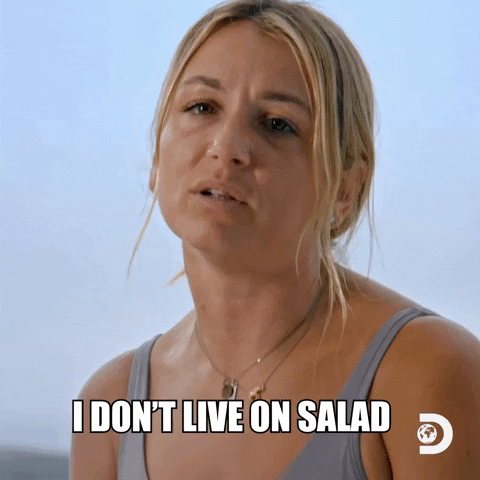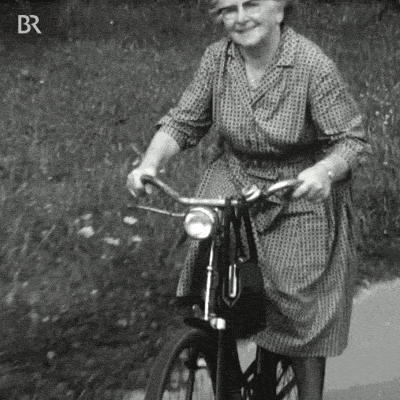Unlock the Secrets of Eternal Vitality: Defy Sarcopenia and Aging with Simple Lifestyle Changes

Maintaining muscle mass and bone strength is crucial for preserving mobility, independence, and quality of life as we age. However, age-related conditions like sarcopenia (muscle loss) and osteoporosis (bone loss) can rob seniors of the vitality they enjoyed in earlier decades. The consequences of these conditions range from increased risk of falls and fractures to severe disabilities requiring assisted care.
The good news is that strategic lifestyle interventions can help seniors preserve musculoskeletal fitness even into advanced age. In this blog post, I will provide an overview of sarcopenia and osteoporosis while outlining evidence-based prevention and treatment strategies. We will cover the importance of nutrition (including protein, calcium and vitamin D intake), physical activity, medication options, and fall prevention. My goal is to empower seniors and their caregivers with practical, realistic steps to maintain bone density and muscle mass. Small adjustments to diet, activity levels, home safety, and healthcare can yield impressive quality of life dividends while reducing injury risk.
In summary, sarcopenia and osteoporosis threaten seniors' independence and wellbeing, but strategic interventions can reduce their impact. Consuming enough protein, calcium and vitamin D can help preserve musculoskeletal fitness. Weight-bearing and resistance exercise stimulates bone growth and muscle strength. Medications like bisphosphonates and denosumab improve bone density and reduce fracture risk. Fall prevention and injury protection are also instrumental.
The key is to be proactive about your bone and muscle health. Get assessed for sarcopenia and osteoporosis risks. Talk to your doctor about diet, supplements, and medication options. Start a balanced fitness program that includes aerobic, weight-bearing and resistance exercises. Make your home environment safer. Don't resign yourself to fragility and immobility take control of your health by implementing the recommendations outlined here. With some planning and dedication, you can maintain your vitality and independence for years to come.
Understanding Sarcopenia and Its Impact
Sarcopenia refers to the age-related loss of skeletal muscle mass and function. After age 40, adults lose on average 3-8% of their muscle mass per decade. This steady atrophy accelerates after age 70, with muscle mass decreasing up to 15% every 10 years. Sarcopenia affects over 50 million people globally and up to 1 in 4 seniors over age 80.
Several interconnected factors drive sarcopenia progression in seniors:
- Reduced physical activity
- Age-related hormonal changes
- Chronic inflammation
- Suboptimal protein intake and nutrient absorption
- Motor neuron death
The primary symptom of sarcopenia is progressive muscle weakness over time. As the condition advances, even simple daily tasks like climbing stairs or carrying groceries can become difficult. Balance and mobility decline as well, raising fall risk. Sarcopenia also impairs glucose metabolism and weight management while increasing fatigue.
Of particular concern is the relationship between sarcopenia and hip fractures. Weakened muscles cannot cushion falls as effectively, leading to more severe injuries. Hip fractures require surgery, immobilize patients, and often precipitate a downward spiral in health. Within a year of breaking a hip, between 15-25% of seniors die. Preventing sarcopenia is crucial for protecting bone integrity and reducing fall severity.
Fortunately, sarcopenia can be delayed or mitigated through exercise, nutrition, and certain medications. But these interventions become less effective if the condition is too advanced. That’s why early screening and treatment are key acting while muscle loss is still minimal retains the best odds of preservation. Talk to your doctor about assessing your sarcopenia risk and strategizing prevention. Maintaining strength takes commitment as we age, but pays invaluable dividends for health and independence.
Preventing Hip Fractures: Risks and Mitigation
As we age, hip fractures become an increasingly significant concern. Each year over 300,000 seniors suffer hip fractures, with numbers expected to exceed 500,000 annually by 2040. Unfortunately, hip fractures often permanently reduce mobility and independence while doubling mortality risk within a year of the injury.
Two primary factors conspire to increase hip fracture incidence in seniors:
- Sarcopenia Age-related muscle loss reduces fall resilience and the ability to cushion impacts. Up to 25% of hip fracture patients may have undiagnosed sarcopenia exacerbating their injury severity.
- Osteoporosis Diminishing bone mineral density means seniors’ hips literally become more breakable. Women especially lose bone mass rapidly following menopause unless preventative action is taken.
While sarcopenia and osteoporosis amplify risks, falling itself is the immediate precursor of most hip fractures. Prevention strategies should consequently focus on maintaining muscle mass, improving bone density, and reducing falls. Key measures include:
- High protein intake with calcium/vitamin D supplementation
- Weight-bearing aerobic activity and resistance training
- Medications like bisphosphonates or denosumab
- Removing home hazards that precipitate falls
- Using assistive devices like canes or walkers for stability
Talk to your doctor about having your sarcopenia and osteoporosis risk assessed, including screening for vitamin D deficiency. A personalized prevention plan can help strengthen your bones, muscles and balance three pillars central to protecting hip integrity. Don’t become a hip fracture statistic when targeted lifestyle changes and medical care can reinforce your foundations.

The Role of Protein, Vitamin D, and Calcium
Protein is essential for building and repairing muscle tissue damaged by sarcopenia. Older adults require higher protein intake generally 1.2-1.5 g per kilogram daily to offset diminished absorption and slower muscle synthesis. Consuming 25-30g of high-quality protein per meal maximizes retention. Excellent dietary sources include meat, fish, eggs, dairy and legumes. Nutrient timing also matters spacing protein regularly throughout the day stimulates sustained muscle protein synthesis. Supplements like whey protein help those struggling to meet needs through food alone.
Vitamin D and calcium are crucial for bone strength deficiencies contribute greatly to osteoporosis progression. Vitamin D improves calcium absorption and bone mineralization while reducing fracture incidence. Many older adults lack adequate vitamin D due to reduced sun exposure and diminished skin synthesis. 800-1000 IU of supplemental vitamin D3 per day is recommended. Excellent food sources include oily fish, eggs, and fortified dairy/juice.
Calcium is the primary structural mineral in bone matrix. Inadequate calcium intake accelerates bone depletion this exacerbates osteoporosis while hiking fracture risk. Seniors should consume at least 1,200mg of calcium daily through dairy, vegetables like broccoli and kale, nuts, seeds, legumes.

Lifestyle Interventions for Muscle and Bone Health
While nutrition optimizes the raw materials for musculoskeletal health, exercise builds fitness through direct mechanical stimulation. Both aerobic activity and resistance training confer anti-aging benefits enhancing mobility, vitality and injury resilience.
Weight-bearing aerobic exercise walking, jogging, tennis etc stresses bones so they adapt by increasing density. Meanwhile, muscle contractions pull on attachment sites to strengthen joints. Balance training helps prevent injurious falls. For general health, seniors should accumulate at least 150 minutes of moderate aerobic activity weekly.
Resistance training powerfully builds muscle size and quality. As we age, muscle fibers shrink and risk fatty substitution but lifting weights reverses this atrophy via muscle protein synthesis. For optimal results, seniors should perform resistance exercise involving major muscle groups twice weekly. This engages sarcopenia for more effective strength gains.
Beyond exercise, supporting lifestyle measures matter too:
- Quit smoking accelerates osteoporosis
- Moderate alcohol heavy intake harms bone formation
- Prevent falls install grab bars, improve lighting, remove hazards
- Review medications some drugs like steroids impair muscle and bone
While exercise and nutrition deserve top billing for preventing sarcopenia and osteoporosis, sensible lifestyle precautions greatly amplify your efforts. Constructive daily habits optimize the benefits of targeted exercise and diet interventions helping you achieve enduring fitness for active late life seasons.
Medical Interventions and Treatment Options
When lifestyle measures prove insufficient, medical treatments offer a powerful adjunct for protecting bone and muscle health. Under a doctor’s supervision, medications can help reverse bone loss and fracture risk. However, all pharmaceutical options carry some risks discuss pros and cons thoroughly with your provider before starting any regimen.
Bisphosphonates like alendronate are commonly prescribed osteoporosis drugs that reduce bone resorption by interfering with osteoclast activity. Clinical trials confirm bisphosphonates strengthen bone mineral density and significantly lower fracture rates in high risk seniors. Gastrointestinal side effects can occur, so proper dosing and administration protocols must be followed.
The monoclonal antibody denosumab provides more targeted inhibition of the RANKL protein that stimulates bone loss. Injections every six months have been highly effective in clinical testing for increasing bone density and reducing fracture rates. Flu-like symptoms may manifest shortly after receiving doses.
No medications are currently FDA approved for sarcopenia, but doctors may prescribe off-label drugs like hormone replacement, SARMs or myostatin inhibitors to amplify protein synthesis and muscle gains in response to resistance training especially for severe or sudden onset muscle wasting.
Medical intervention introduces more powerful tools against bone loss and muscle wasting. But sustainable results require consistent nutrition, activity and lifestyle optimization.

Summary and Conclusion
Preserving mobility and vitality into older age requires vigilance against sarcopenia and osteoporosis two musculoskeletal conditions threatening independence. Sarcopenia, the loss of muscle mass and strength affects over 50 million aging adults. It erodes physical function while amplifying fall severity and injury outcomes like hip fractures. Osteoporosis deprived bone mineral density exponentially increases seniors' fracture likelihood from even mild falls.
Fortunately evidence-based lifestyle interventions plus medical advances empower older adults to maintain musculoskeletal fitness. Consuming more high-quality protein combats sarcopenia. Adequate calcium and vitamin D intake supports bone integrity. Regular resistance and weight-bearing activity stresses muscles and bones so they adaptively strengthen. Assistive devices and home modifications prevent hazardous spills. When health conditions warrant, medications like bisphosphonates and denosumab structurally reinforce bones.
While some loss of strength, speed and resilience is expected, resigning oneself to frailty and dependence is unnecessary. Prioritize daily fitness and nutrition choices benefiting both musculoskeletal systems. Undergo screening for sarcopenia and osteoporosis so emerging risks are addressed early. Work closely with your healthcare providers to balance safety with independence at every stage of aging. Place preventative care for your muscles and bones on par with managing any chronic diseases. Commit to a proactive stance now so your later decades overflow with vitality rather than immobility!
Anecdote
When Michelle turned 65, she promised herself she would not become another depressing statistic about aging. She was determined to stay active, independent and fully engaged with life well into her later decades. Now at 70, she credits her vitality to strategic lifestyle choices preserving her bone density and muscle mass.
Shortly after retiring, Michelle scheduled appointments with healthcare specialists to establish baselines for risk factors like osteoporosis and sarcopenia. She tested slightly deficient in vitamin D and protein intake so her doctor recommended more salmon, eggs and legumes plus targeted supplementation. Michelle also met with a physical therapist who designed a personalized fitness regimen combining balance exercises, weight training and walking routines. At home, Michelle minimized fall hazards by clearing cluttered spaces and installing grab bars.
Within a year Michelle halted the incremental muscle loss most peers seem to accept. Her bone density scans show improvement year over year, greatly reducing the chances of dangerous fractures. While peers complain about stiffness, fatigue and mobility challenges, Michelle radiates vigor still gardening, volunteering and enjoying outdoor hobbies pain-free.
Michelle admits maintaining vitality takes more planning and discipline post-retirement. But the investment of time and energy pays off exponentially with each actively-engaged, purpose-filled season.
FAQ
Can you reverse sarcopenia?
While sarcopenia cannot be completely reversed, it is possible to regain some of the muscle mass and strength lost through lifestyle interventions like exercise and improved nutrition. Implementing resistance training, consuming more protein, and taking certain medications under a doctor's supervision may help rebuild muscle to some degree. The key is intervening early before significant muscle wasting.
What are 4 symptoms of sarcopenia?
The main symptoms of sarcopenia include:
- Loss of muscle strength
- Decline in physical function difficulty with tasks like rising from a chair or climbing stairs
- Reduced muscle mass thinning of muscles noticeable under the skin
- Impaired balance and mobility increased risk of falls
What is the best exercise for sarcopenia?
Resistance training and weight lifting are considered the most effective exercises for combatting sarcopenia. Focus on lifting weights targeting major muscle groups of the arms, core, and legs. Using resistance bands, weight machines, free weights or even your own bodyweight provides mechanical stimulation to drive muscle protein synthesis.
What is the primary cause of sarcopenia?
Although aging itself causes gradual muscle fiber atrophy, the primary driver is physical inactivity Sedentary lifestyles fail to provide enough muscular overload stimulus to maintain mass. Chronic diseases, inflammatory factors, suboptimal protein intake, and hormonal changes also contribute to accelerated muscle wasting.
Can a 70 year old regain muscle mass?
Yes, it is possible for a 70 year old to regain some lost muscle mass through proper exercise and nutrition. Implementing resistance training with weightlifting or bands 2-3 times per week along with consuming more dietary protein can help stimulate muscle protein synthesis even into older age. The extent of muscle regain depends on the degree of atrophy.
What is the quickest way for elderly to regain muscle mass?
The fastest way for the elderly to rebuild muscle is to start a regular resistance training program focusing on all major muscle groups. Compound lifts using heavier weights for lower reps optimizes growth signaling for the most efficient gains. Taking medications like testosterone or growth hormone requires caution but can accelerate results.
Can walking reduce sarcopenia?
Walking is excellent for overall health, but does not provide enough mechanical overload alone to reverse sarcopenia. To regenerate wasted muscle fibers, direct targeted resistance with progressive weight increments is essential. However, combining weight training with moderate walking amplifies fitness.
What foods are good for sarcopenia?
Good dietary sources of protein to fight sarcopenia include meat, poultry, fish, eggs, dairy (Greek yogurt), beans, lentils, nuts and seeds. Whey protein supplements can also help older adults reach daily intake goals. Emphasize vitamin D sources as well fatty fish, eggs, fortified dairy and juice, liver.
What is the difference between Malnutrition, Cachexia, and Sarcopenia?
- Malnutrition: Malnutrition refers to deficiencies, excesses, or imbalances in a person's intake of energy and/or nutrients. It can result from inadequate diet, poor absorption, or other medical conditions.
- Cachexia: Cachexia is a complex metabolic syndrome associated with underlying illness and characterized by involuntary weight loss, muscle wasting, weakness, and fatigue. It's often seen in patients with chronic diseases like cancer, AIDS, and heart failure.
- Sarcopenia: Sarcopenia specifically refers to the age-related loss of muscle mass, strength, and function. While malnutrition and cachexia can contribute to sarcopenia, it's distinct in that it primarily focuses on muscle loss associated with aging.
What is the difference between Wasting and Cachexia?
- Wasting: Wasting refers to the general decline in body mass, often characterized by both fat and muscle loss. It can occur in various conditions including malnutrition, chronic diseases, and infections.
- Cachexia: Cachexia is a specific type of wasting syndrome that is typically associated with chronic illness. It involves severe weight loss, muscle wasting, weakness, and fatigue, often resistant to nutritional intervention.
What is the difference between Atrophy and Sarcopenia?
- Atrophy: Atrophy is the shrinking or wasting away of a part of the body, often referring to muscle or organ tissue. It can result from disuse, injury, or certain medical conditions.
- Sarcopenia: Sarcopenia is a specific type of atrophy that specifically refers to the age-related loss of muscle mass, strength, and function. It's a natural part of the aging process, but can be exacerbated by factors like sedentary lifestyle, poor nutrition, and chronic diseases.
What are 4 symptoms of Sarcopenia?
- Loss of Muscle Mass: Sarcopenia is characterized by a progressive decline in muscle mass, leading to weakness and functional impairment.
- Loss of Muscle Strength: As muscle mass decreases, there is often a corresponding loss of muscle strength, making tasks like lifting objects or getting up from a chair more difficult.
- Impaired Physical Performance: Sarcopenia can lead to decreased physical performance, such as reduced walking speed, difficulty with balance, and overall decreased mobility.
- Increased Risk of Falls and Fractures: Due to weakened muscles and impaired balance, individuals with sarcopenia are at a higher risk of falls and fractures, which can further decrease mobility and independence.
Key Takeaways
- Get assessed early establish bone density and muscle mass baselines
- Consume more protein supplement diet if inadequate
- Prioritize weight training grow muscle to combat sarcopenia
- Take calcium and vitamin D daily support bone renewal
- Incorporate balance exercises reduce fall likelihood
- Have medications reviewed some drugs impair muscle/bone health
- Improve home safety reduce slip and fall risk
- Use assistive devices if needed canes, walkers etc
- Stay socially and mentally active lifts mood and motivation
- Commit to prevention over intervention act while still healthy
Additional Resources
For those seeking more information on sarcopenia, osteoporosis, nutrition, and fitness recommendations for older adults, the following resources can be valuable:
- Sarcopenia Information: The Cleveland Clinic provides an overview of sarcopenia, including symptoms, causes, and treatment options. They explain the condition's progression and offer lifestyle tips to manage and potentially reverse its effects 1.
- Osteoporosis Information: The Mayo Clinic offers detailed information on osteoporosis, including symptoms, causes, risk factors, and prevention strategies. They emphasize the importance of a healthy diet and regular exercise to maintain bone health 2
- Nutrition Guidelines: MyPlate.gov provides nutrition tips for older adults, focusing on the unique needs of this age group. It includes advice on protein, calcium, vitamin D, and other essential nutrients to maintain muscle mass and overall health 3.
- Fitness Recommendations: The Centers for Disease Control and Prevention (CDC) offer guidelines on physical activity for healthy aging. They provide a resource on strength training for older adults and recommendations for aerobic and muscle-strengthening activities 4.
Contact Information for Healthcare Professionals
For personalized advice, it is best to contact healthcare professionals directly. You can start by discussing concerns with a primary care physician, who may then refer you to specialists such as:
- Geriatricians: Doctors specializing in the health care of older people.
- Endocrinologists: Specialists in hormone-related conditions, including osteoporosis.
- Physiotherapists: Experts in movement and exercise therapy to improve strength and balance.
- Registered Dietitians: Nutrition experts who can provide personalized dietary advice.
Contact information for these professionals can typically be found by:
- Visiting the official websites of local hospitals or clinics.
- Checking with insurance providers for a list of in-network specialists.
- Asking for referrals from a primary care physician.

Thank you for reading this post!
If you found it helpful or informative, please consider sharing a 7 day free trial with your friends, family, or colleagues who might benefit from it.
Your support helps me reach more people and spread awareness on important topics like this. Together, we can make a difference!
Citations:
https://my.clevelandclinic.org/health/diseases/23167-sarcopenia
https://www.mayoclinic.org/diseases-conditions/osteoporosis/symptoms-causes/syc-20351968
https://www.myplate.gov/life-stages/older-adults
https://www.cdc.gov/physicalactivity/basics/older_adults/index.htm
https://www.ncbi.nlm.nih.gov/pmc/articles/PMC4269139/
https://www.niams.nih.gov/health-topics/osteoporosis
https://health.gov/news/202107/nutrition-we-age-healthy-eating-dietary-guidelines
https://my.clevelandclinic.org/health/diseases/4443-osteoporosis
https://www.ncoa.org/article/6-healthy-eating-habits-for-older-adults
https://www.womenshealth.gov/sarcopenia
https://www.ncbi.nlm.nih.gov/books/NBK560813/
https://www.osteoporosis.foundation/patients/about-osteoporosis
https://acl.gov/senior-nutrition/DGAtoolkit
https://medlineplus.gov/osteoporosis.html
https://medlineplus.gov/nutritionforolderadults.html
https://www.sciencedirect.com/science/article/pii/S1568163722000599
https://www.bonehealthandosteoporosis.org/patients/what-is-osteoporosis/
https://www.sciencedirect.com/topics/medicine-and-dentistry/sarcopenia
https://www.nhs.uk/conditions/osteoporosis/
https://www.nutrition.gov/topics/nutrition-life-stage/older-adults




